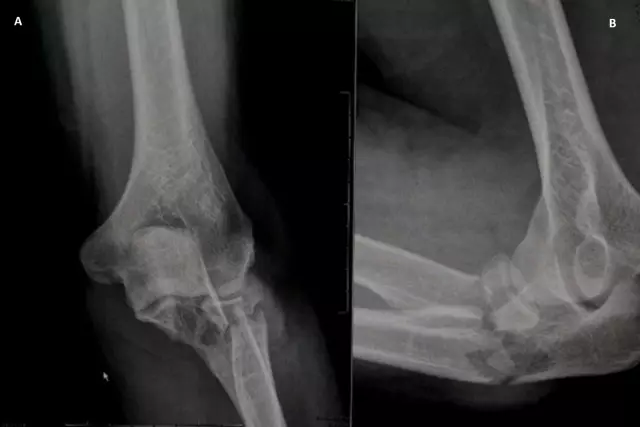- Author Rachel Wainwright [email protected].
- Public 2023-12-15 07:39.
- Last modified 2025-11-02 20:14.
Phalanges of the fingers
The phalanges of human fingers have three parts: proximal, main (middle) and terminal (distal). On the distal part of the nail phalanx, there is a well-visible nail tuberosity. All fingers are formed by three phalanges called the main, middle, and nail. The only exception is the thumbs - they consist of two phalanges. The thickest phalanges of the fingers form the thumbs, and the longest form the middle fingers.

Structure
The phalanges of the fingers are short tubular bones and look like a small elongated bone, in the form of a half-cylinder, with the convex part facing the back of the palm. At the ends of the phalanges there are articular surfaces that take part in the formation of interphalangeal joints. These joints are block-shaped. In them, it is possible to perform extensions and flexions. The joints are well strengthened with collateral ligaments.
The appearance of the phalanges of the fingers and the diagnosis of diseases
In some chronic diseases of the internal organs, the phalanges of the fingers are modified and take on the form of "drumsticks" (spherical thickening of the terminal phalanges), and the nails begin to resemble "watch glasses". Such modifications are observed in chronic lung diseases, cystic fibrosis, heart defects, infective endocarditis, myeloid leukemia, lymphoma, esophagitis, Crohn's disease, liver cirrhosis, diffuse goiter.
Fracture of the phalanx of the finger
Fractures of the phalanges of the fingers are most often caused by a direct blow. Fracture of the nail plate of the phalanges is usually always fragmented.
Clinical picture: the phalanx of the fingers hurts, swells, the function of the injured finger becomes limited. If the fracture is displaced, then the deformation of the phalanx becomes clearly visible. With fractures of the phalanges of the fingers without displacement, sprains or displacements are sometimes mistakenly diagnosed. Therefore, if the phalanx of the finger hurts and the victim associates this pain with injury, then an X-ray examination (fluoroscopy or X-ray in two projections) should be mandatory, which allows a correct diagnosis to be made.
Treatment of a fracture of the phalanx of the fingers without displacement is conservative. An aluminum splint or plaster cast is applied for three weeks. After that, physiotherapy, massage and physiotherapy exercises are prescribed. Full mobility of the injured toe is usually restored within a month.
When the phalanges of the fingers are displaced, the bone fragments are compared (repositioned) under local anesthesia. Then a metal splint or a plaster cast is applied for a month.
In case of fracture of the nail phalanx, it is immobilized with a circular plaster cast or adhesive plaster.
The phalanges of the fingers hurt: causes
Even the smallest joints in the human body - interphalangeal joints - can be affected by diseases that impair their mobility and are accompanied by excruciating pain. Such diseases include arthritis (rheumatoid, gouty, psoriatic) and osteoarthritis deformans. If these diseases are not treated, then over time they lead to the development of severe deformation of the damaged joints, a complete disruption of their motor function and atrophy of the muscles of the fingers and hands. Despite the fact that the clinical picture of these diseases is similar, their treatment is different. Therefore, if you have pain in the phalanges of the fingers, then you should not self-medicate. Only a doctor, having carried out the necessary examination, can make the correct diagnosis and, accordingly, prescribe the necessary therapy.
Found a mistake in the text? Select it and press Ctrl + Enter.






